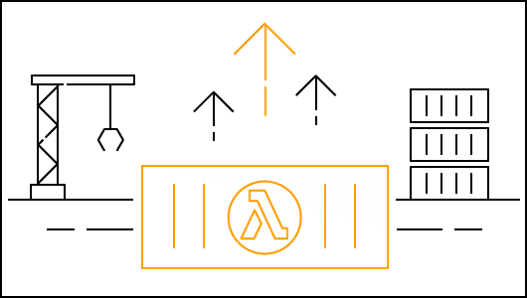Supercharging AWS Lambda: Mastering Layers for Optimal Performance
 Tanishka Marrott
Tanishka Marrott
Today we'd be diving into AWS Lambda Layers. A feature that would allow for an efficient code reuse and improved deployment practices. In this post, I’ll explain what Lambda Layers are, their benefits, and how to use them effectively. Let’s get started!
Table of Contents
Introduction to AWS Lambda Layers
Benefits of Using Lambda Layers
Creating and Managing Lambda Layers
Using Lambda Layers in Your Functions
Best Practices for Lambda Layers
Real-World Use Cases
Conclusion
Introduction to AWS Lambda Layers
AWS Lambda Layers are a powerful feature that allows developers to manage and share common code and dependencies across multiple Lambda functions. By decoupling function code from its dependencies, Lambda Layers enable better code organization, reduced deployment package size, and easier updates.
Benefits of Using Lambda Layers
1. Code Reuse
With Lambda Layers, you can share common code, libraries, and dependencies across multiple Lambda functions. This eliminates redundancy and ensures consistency across your serverless applications.
2. Reduced Deployment Package Size
By offloading shared dependencies to a layer, you can significantly reduce the size of your Lambda deployment packages. This results in faster deployments and reduced cold start times.
3. Easier Updates
Updating shared code becomes simpler with Lambda Layers. Instead of updating each Lambda function individually, you can update the layer, and all functions using that layer will automatically use the new version.
4. Better Organization
Layers help in organizing your code and dependencies, making your Lambda functions cleaner and more modular. This leads to improved maintainability and readability.
Creating and Managing Lambda Layers
Packaging Your Dependencies
First, package your dependencies into a ZIP file. For instance, if you want to include the requests library:
mkdir python
pip install requests -t python/
zip -r layer.zip python
Creating a Lambda Layer
Use the AWS CLI to create a layer:
aws lambda publish-layer-version --layer-name my-layer --zip-file fileb://layer.zip --compatible-runtimes python3.8
Using Lambda Layers in Your Functions
To use a layer in your Lambda function, add the layer to your function configuration. This can be done via the AWS Management Console, AWS CLI, or Infrastructure as Code (e.g., CloudFormation, Terraform).
Adding a Layer to Your Function
Using AWS CLI:
aws lambda update-function-configuration --function-name my-function --layers arn:aws:lambda:us-west-2:123456789012:layer:my-layer:1
Accessing Layer Content
The content of the layer will be available in the /opt directory of your Lambda function’s execution environment.
Example: Using a Layer in a Lambda Function
Here’s an example of a simple Lambda function using a layer that contains the requests library:
import json
import requests
def lambda_handler(event, context):
response = requests.get('https://api.example.com/data')
data = response.json()
return {
'statusCode': 200,
'body': json.dumps(data)
}
Best Practices for Lambda Layers
Keep Layers Lightweight: Only include necessary dependencies to keep layers manageable and reduce latency.
Versioning: Use versioning to manage updates and ensure backward compatibility.
Security: Ensure layers do not contain sensitive information or credentials.
Documentation: Document the contents and purpose of each layer for better maintainability.
Conclusion
AWS Lambda Layers are a valuable tool for optimizing serverless applications. By enabling code reuse, reducing deployment package sizes, and simplifying updates, layers enhance the efficiency and maintainability of Lambda functions. Whether you’re building small applications or large-scale systems, incorporating Lambda Layers into your architecture can lead to significant improvements in performance and developer productivity.
Stay tuned for more in-depth articles and case studies on optimizing cloud infrastructure, improving system performance, and ensuring the highest levels of security. Please feel free to connect on LinkedIn: Tanishka Marrott
I hope this article helps you understand the power and flexibility of AWS Lambda Layers. Implement these practices in your projects and see the difference they can make! Feel free to share your experiences and insights in the comments below.
Happy coding!
Subscribe to my newsletter
Read articles from Tanishka Marrott directly inside your inbox. Subscribe to the newsletter, and don't miss out.
Written by

Tanishka Marrott
Tanishka Marrott
I'm a results-oriented cloud architect passionate about designing resilient cloud solutions. I specialize in building scalable architectures that meet business needs and are agile. With a strong focus on scalability, performance, and security, I ensure solutions are adaptable. My DevSecOps foundation allows me to embed security into CI/CD pipelines, optimizing deployments for security and efficiency. At Quantiphi, I led security initiatives, boosting compliance from 65% to 90%. Expertise in data engineering, system design, serverless solutions, and real-time data analytics drives my enthusiasm for transforming ideas into impactful solutions. I'm dedicated to refining cloud infrastructures and continuously improving designs. If our goals align, feel free to message me. I'd be happy to connect!